South Ferry Street
Introduction
Author-Uploaded Audio
Listen to a narration of this entry's description by Kim Parker .
Text-to-speech Audio
If you plan on doing the full tour, we suggest starting at 71 South Ferry Street and heading east towards Equinox at 35 South Ferry Street. From there you can take a left onto Green Street, pass by Saint John's Church, and take a left onto Westerlo Street for the next stop.
There are several buildings along South Ferry Street that serve as excellent examples of Greek Revival architecture. First, we will visit 53, 59-61 and 65-71 South Ferry Street all of which were built between 1815 and 1832. Many of these buildings were developed and lived in by partners in a local brewery, as well as merchants and landowners who then utilized them for rental income.
We will then walk past 35 and 37 South Ferry, built sometime between 1828 and 1831. These buildings served as the Saint John’s Roman Catholic Parish parochial school and rectory. Number 35 was designed by famed local architect, Philip Hooker. Today it is occupied by Equinox, a homeless shelter for teens.
All of these buildings are part of the Pastures Historic District, added to the National Register of Historic Places in 1972, and then to the State Register with the passage of the New York State Historic Preservation Act in 1980.
Images
35 S. Ferry St, Equinox

35 S. Ferry St, Equinox: note the entranceway
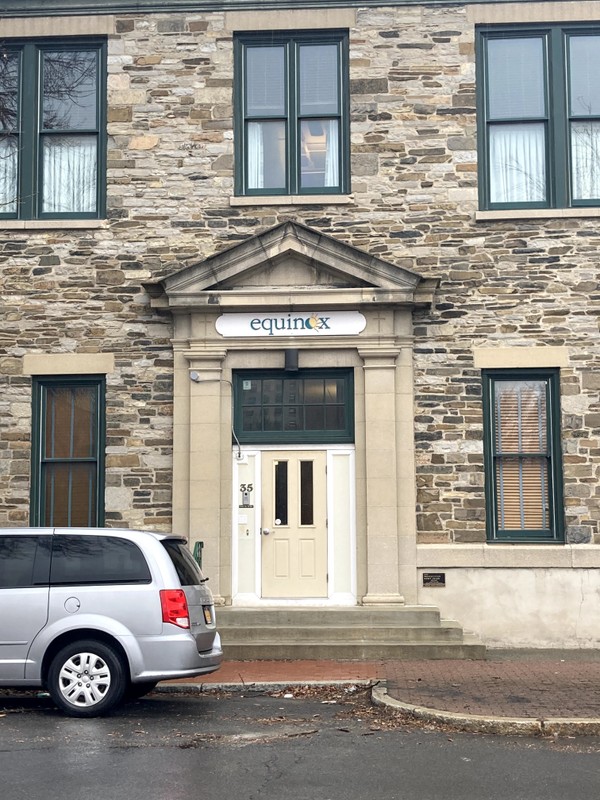
Looking east towards 37 and 35 South Ferry St, March 1972

37 S. Ferry St
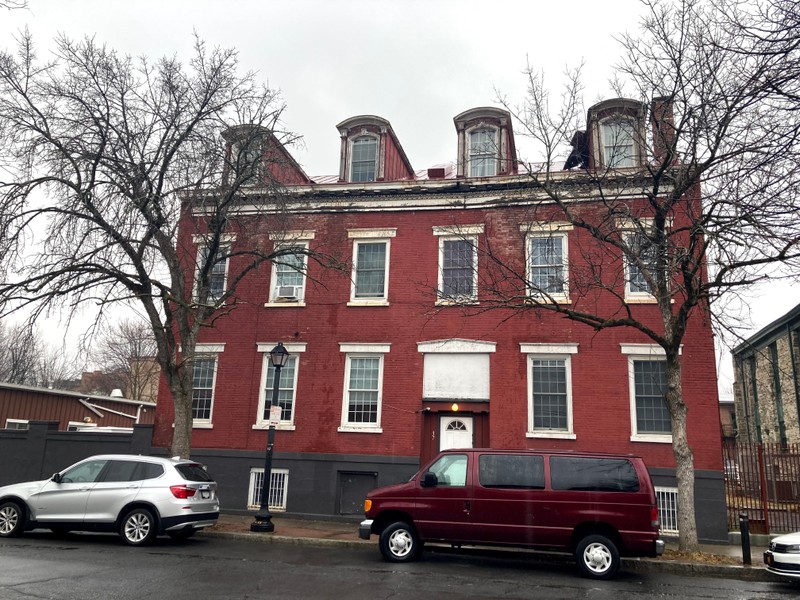
37 S. Ferry St
.jpg)
37 S. Ferry St: note the entranceway
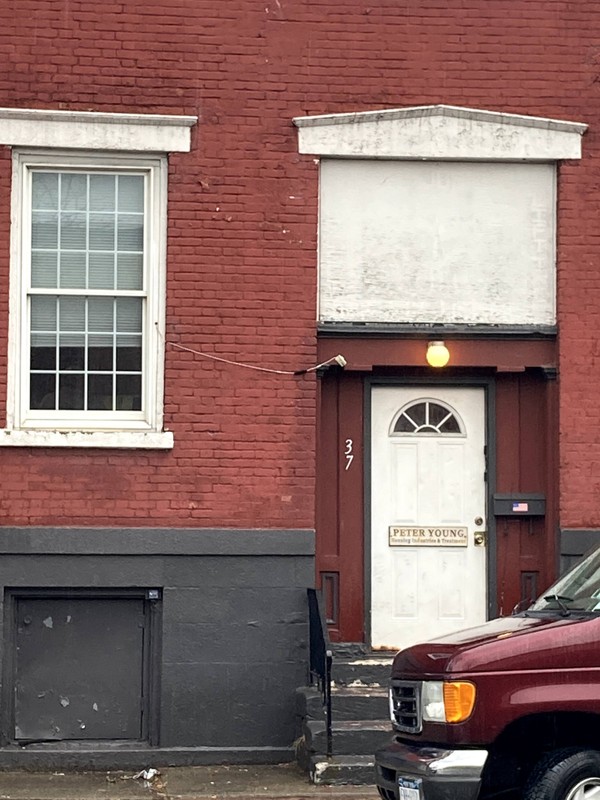
53 S. Ferry St.

59-65 S. Ferry St
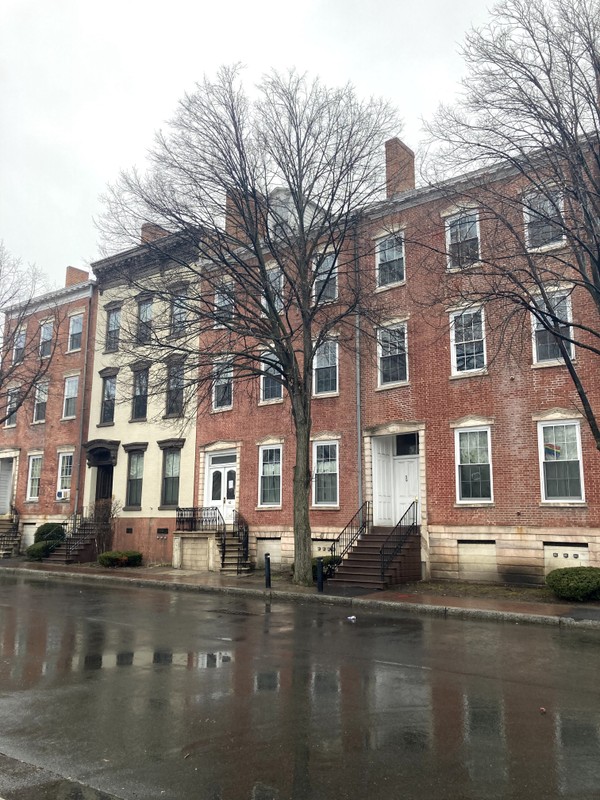
59 S. Ferry St.
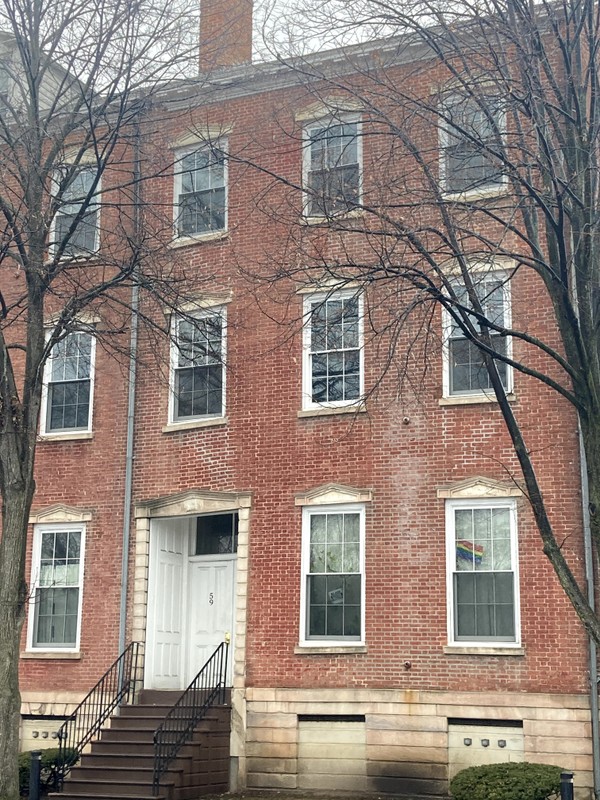
61 S. Ferry St, Present Day
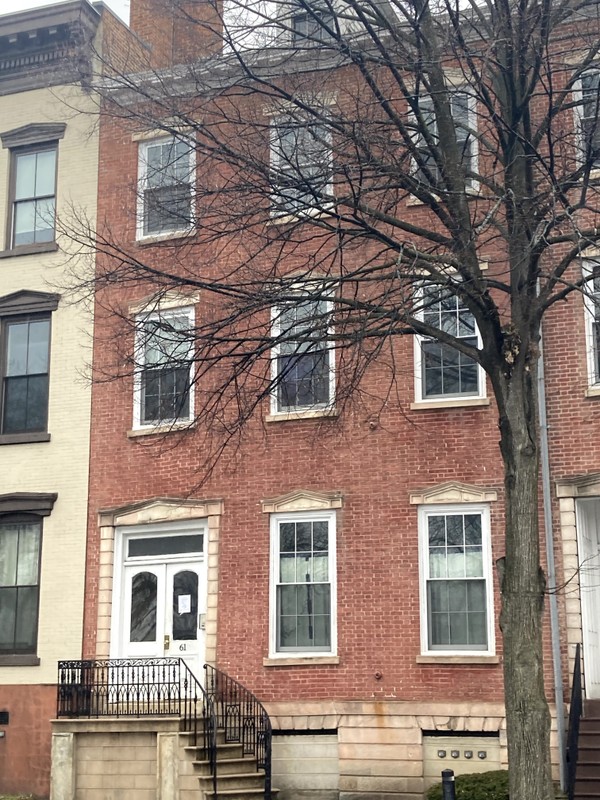
61 South Ferry St, March 1972

65 S. Ferry St

65 S. Ferry St: note the entranceway

67 S. Ferry St
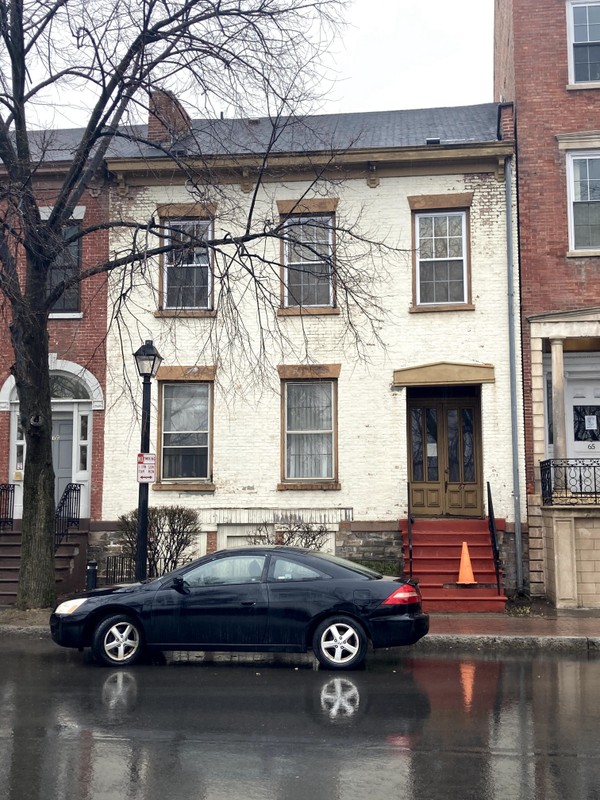
69 S. Ferry St.
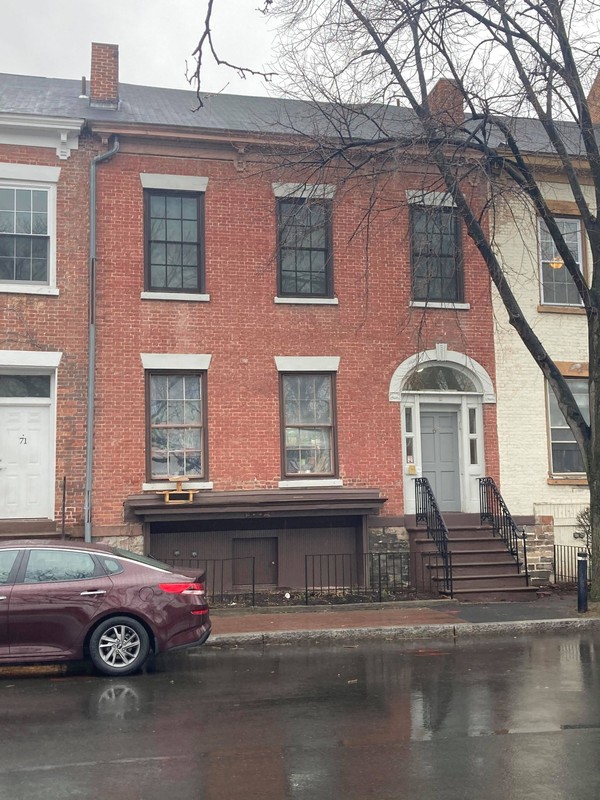
71 S. Ferry St.

71 S. Ferry St.

Backstory and Context
Author-Uploaded Audio
Listen to a narration of this entry's description by Kim Parker .
Text-to-speech Audio
The land you're standing on was once used as a communal pasture (hence the name) until the Dutch Reformed Church sold off the divided lots towards the end of the eighteenth century. The majority of the area was subsequently developed during the early 19th Century. Interesting fact - this was the first neighborhood to be built outside the city's stockade.
During the first period of development (from the 1820s onwards) buildings were generally constructed by merchants and manufacturers whose businesses were located in the South End, or by speculators who would rent out the properties to business owners. The area served as home for the middle and lower-middle class, including tradesmen, craftsmen, and free African Americans. During this initial period of development, the houses were primarily of the Federal style.
The bulk of the development in this area took place during the 1830s-1860s, the architecture reflects this as it is predominantly Greek Revival in style (the popular style in the country at the time). Masons and carpenters would buy several plots of land to develop; one plot being where they lived and the remaining plots rented out to others. Many buildings also added a third story - keep an eye out for the tell-tale addition of dormer windows, which project out of the roof. As time moved on, the area began to get more built up. Some properties became mixed-use with commercial businesses on the first floor, resulting in ornate storefronts - some of which still exist today. During this time, the Pastures was one of the city's busiest neighborhoods in the City, playing host to a variety of different ethnic and immigrant groups. These groups ranged from the earlier Dutch and English to Italian, Jewish, and African American communities.
The area began to decline post-1950's due to suburbanization. It then became the focus of the City, and a long revitalization project began Unfortunately, half of the original housing stock was lost during this process.
67-71 S. Ferry
The rowhouses at 67-71 S. Ferry St were built for James Boyd, owner of the Arch Street Brewery, circa 1817. Boyd, a man of Scottish descent, opened the brewery in 1796 which stood along S. Ferry St, extending a full block south to Arch St. It is believed to be the first modern brewery in Albany and was later renamed the Albany Brewing Company. 73 S. Ferry St was also built as Boyd's residence in 1815, but this building no longer stands. In 1822, Boyd deeded all the different homes he had built (including 75 and 77 S. Ferry) to his five sons. Some of them were partners in the brewery, and some retained the properties to use for rental income.
53, 59-61, 65 S. Ferry
Local merchant William Fowler built 53 S. Ferry 1826, and constructed 59 the following year. Both were residences. In 1827, Boyd’s (above) son, Robert—by then a partner in the brewery—built 61 S. Ferry St, modeling his home after Fowler’s. Robert was active in local religious circles, helping to erect the Rensselaer Street Mission Sabbath School on Rensselaer Street, a few blocks from where you are now. Later in 65 S. Ferry was built by Russell Forsyth—another local merchant—in 1832.The home was later converted into apartments.
These homes are all great examples of Greek Revival architecture. Both 59 and 61, while styled differently, have transoms above the door. They also have a recessed entrance with a pediment (the triangular structure) above them. Much like these homes, 65 has a similar design with a recessed entrance and a pediment above. It also features doric columns as a part of the enframement of the door and dentil details. There are also doric pilasters in the doorway with transoms surrounding the doorway.
35 and 37 S. Ferry
As you head east, you will see 35 and 37 to your left. Both 35 and 37 have notable entranceways. Number 35 was designed by Philip Hooker, a renowned architect from Albany who also designed buildings such as the original New York State Capitol building. 35 has an impressive enframement with a pediment and square doric pilasters. While 37 has a pediment above the doorway, it appears some changes have been made to it over the years.
These buildings were built sometime between 1828 and 1831 and respectively served as the Saint John’s Roman Catholic Parish parochial school and rectory. 35 S. Ferry first housed Saint Paul’s Episcopal Church for less than a decade, when it was then purchased by Saint John’s Roman Catholic Parish, Albany’s second Roman Catholic parish. Saint John’s was founded in 1837. Two years later, the Church purchased 35 S. Ferry. As time passed, the Catholic population of the South End grew immensely with the influx of Irish immigrants, calling for a larger church to be built. This church was built on Green St, where it stood vacant for decades during the late twentieth and early twenty-first century. 35 was then remodelled into Saint John’s school once the new church was complete. Today, 35 houses Equinox, a homeless shelter for teens.
Sources
Bender, Matthew. Albany Architecture: A Guide to the City. Edited by Diana S. Waite. Albany: Mount Ida Press, 1993. https://books.google.com/books?id=B_M7vlQPa8kC&printsec=frontcover&source=gbs_atb#v=onepage&q&f=false.
New York SP Pastures Historic District, 3/16/1972 [National Register for Historic Places Inventory - Nomination Form]; Records of the National Park Service, 1785-2006, Record Group 79; National Archives at College Park, College Park, MD [online version available through the Archival Research Catalog (ARC identifier 75316307) at https://catalog.archives.gov/id/75316307; February 25, 2021].
New York State Historic Preservation Office. Saint John's School. CRIS Entry 00140.004188.
New York State Historic Preservation Office. Saint John's Rectory. CRIS Entry 00140.004189.
New York State Historic Preservation Office. 53 South Ferry St, Albany NY. CRIS Entry 00140.004193.
New York State Historic Preservation Office. 59 South Ferry St, Albany NY. CRIS Entry 00140.004194.
New York State Historic Preservation Office. 61 South Ferry St, Albany NY. CRIS Entry 00140.004195.
New York State Historic Preservation Office. 65 South Ferry St, Albany NY. CRIS Entry 00140.004197.
New York State Historic Preservation Office. 67 South Ferry St, Albany NY. CRIS Entry 00140.004198.
New York State Historic Preservation Office. 69 South Ferry St, Albany NY. CRIS Entry 00140.004199.
New York State Historic Preservation Office. 71 South Ferry St, Albany NY. CRIS Entry 00140.004200.
Rittner, Don, and Walter Wheeler. "Historic Albany Foundation Oldest Building Inventory (by date)." April 12, 2016. Accessed February 26, 2021. https://static1.squarespace.com/static/5567269ce4b02c6f5096564d/t/570d382862cd94966bf28b7a/1460484139292/OldestBuildingInventory_Date.pdf.
Historic Albany Foundation
Historic Albany Foundation
https://catalog.archives.gov/id/75316307
Historic Albany Foundation
Historic Albany Foundation
Historic Albany Foundation
Historic Albany Foundation
Historic Albany Foundation
Historic Albany Foundation
Historic Albany Foundation
https://catalog.archives.gov/id/75316307
Historic Albany Foundation
Historic Albany Foundation
Historic Albany Foundation
Historic Albany Foundation
Historic Albany Foundation
Historic Albany Foundation
